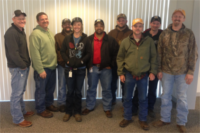Paul O’Neill left Alcoa in 2000. Almost a quarter century later, O’Neill is still upheld as the exemplar of CEO safety leadership. For example:
- How many CEOs kick off their first speech to Wall Street by saying, “I want to talk to you about worker safety. I intend to make Alcoa the safest company in America. I intend to go for zero injuries.” Nothing about a grand turnaround vision. Reducing costs. Improving profits. Raising the stock price. Not surprisingly the room went silent. The audience of analyst and investors was stunned and confused. What language was this?
- How many CEOs react to an on-the-job fatality declaring, “We killed this man,” he told plant management. “It’s my failure of leadership. I caused his death. And it’s the failure of all of you in the chain of command.”
- How many CEOs fire a senior executive for failing to report an incident at his operation where a carbon monoxide leak poisoned 150 employees. No one was killed.
Why, 20+ years later, is Paul O’Neill still the most quoted, most revered CEO when it comes to workplace safety?
Sure, there are CEOs who get it. Every year the National Safety Council honors a group of ten or so. Safety conferences annually salute companies with outstanding safety cultures, and senior leadership is given credit for “owning safety.”
These worthy CEOs are the exception to the rule. What is the rule?
As a rule, the majority of CEOs have no schooling in occupational safety and health. It is not a business school requirement of elective. It is not in a CEO’s upbringing coming through the ranks of finance, sales, engineering, operations, marketing. Consequently, few CEOs come close to “owning safety.” They distance themselves from it, consciously or unconsciously. They delegate it. Maybe receive an annual overview. They associate safety mostly with OSHA and accident rates. “How are we doing compared to last year? How are we doing compared to our competitors?” It’s a numbers game. The questions become more urgent only after a crisis, a fatality, a plant explosion that threatens bad press, fines, brand reputation damage, and today, maybe lowers the company’s ESG score (environment, social and governance).
Last week I listened to a conference call with safety professionals talking candidly, off the record, of course, about how they sell safety initiatives to their senior leaders. I was reminded of the reality faced by many safety pros. Said one participant:
“Our leadership is reactive, not proactive. As a company we are very focused on profit, very client driven. We sell billable hours, not things. Our leadership doesn’t talk about safety. They are far more knowledgeable about technical stuff, not safety engineering. Our organization has not had a strong safety culture.”
Said another:
“We talk safety, safety, safety all the time. At the end of the year, I get paid to make technical improvements. The CEO doesn’t have to be that engaged in safety, but frontline leaders need to be engaged. Supervisors need to be engaged.”
How many safety pros give CEOs a pass when it comes to safety? How many lower their expectations of what CEOs should do for safety?
Since before the dawning of OSHA safety pros have been urged to “get a seat at the table.” The c-suite table. Where decisions are made, priorities set, resources allocated. But it’s hard to breach the c-suite if you can’t mix diplomacy with assertiveness. Said one safety pro on the call:
“We were very clear with the executive safety committee in setting expectations for the initiative roll out. We gave them training. But the c-suite was not 100% engaged in this training. We were not explicit with the c-suite about what was expected. We were not direct with the c-suite. With field staff, yes, we were explicit.”
In how many companies is there one set of expectations for safety engagement for the frontline, supervisors, executive committees, and another lower set of expectations for the c-suite? Because they’re too busy. With not enough bandwidth for safety. Because they don’t know what they don’t know about safety. And it’s not worth risking your job to tell the emperor or empress they’re naked in their knowledge of safety.
So the result is too many CEOs don’t get the criticism, feedback or hard truth about their distance from safety. And so Paul O’Neill continues to be the rock star of safety-savvy CEOs.




